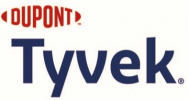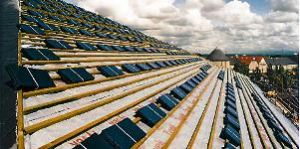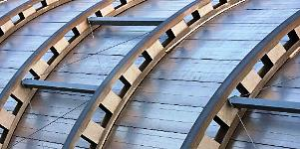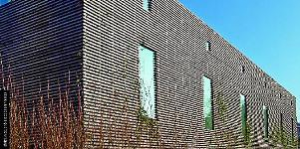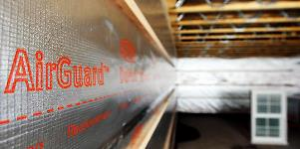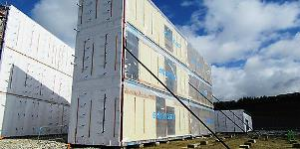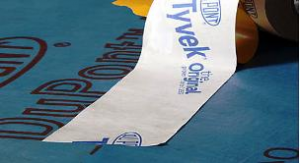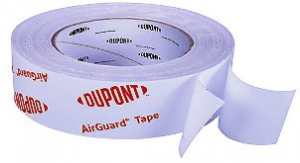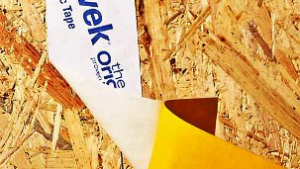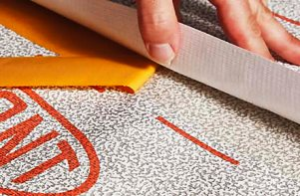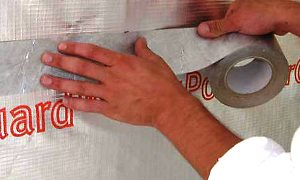DUPONT TYVEK BREATHER MEMBRANES & AIRGUARD AVCL'S
Suppliers of: Breather membranes, roofing membranes, roofing underlays, cladding membranes, facade breather membranes, wall breather membranes, AVCL membranes, air & vapour control layers, air tight vapour barriers, vapour control layer for roofs, tyvek breather membr
DuPont™ Tyvek® and AirGuard® Building Envelope Systems
As an innovative supplier of proven building envelope systems, DuPont™ Tyvek® offers a full range of high-performance membranes and accessories to help prevent air and moisture infiltration and improve energy efficiency in all building types.
Used together, Tyvek® breather membranes and AirGuard® Air and Vapour Control Layers (AVCLs) create a durable, holistic building envelope solution. They are designed to meet current sustainable building requirements and are backed by DuPont, the experts for quality materials and sustainable building practices.
________________________________________________________________________________________________________________
Contact Tyvek: Please use the following link to contact us about your project: Click Here
________________________________________________________________________________________________________________
Tyvek® Breather Membrane Solutions
Breather membranes play a key role in protecting buildings and occupants from the elements. Investing in a quality solution like DuPont™ Tyvek® can help provide long-term building protection – and peace of mind too.
Tyvek® FireCurb® Breather Membrane
Take building protection to the next level with DuPont™ Tyvek® FireCurb® breather membrane (previously called FireCurb® Housewrap) – a fire retardant membrane with the benefits of a Tyvek® breather membrane.
Tyvek® Housewrap
DuPont™ Tyvek® Housewrap is a vapour-permeable breathable membrane for walls that provides moisture protection for timber, steel and concrete walls.
Tyvek® Metal
Tyvek® Metal roofing underlay allows condensation to drain away beneath standing seam metal sheet roofs and improves overall airtightness.
Tyvek® Reflex Membrane
DuPont™ Tyvek® Reflex is a heat reflective membrane that can help improve thermal efficiency in wall systems by reflecting 91% of radiant heat in summer, and reducing convective heat loss in winter.
Tyvek® StructureGuard™
Tyvek® StructureGuard™ is a durable, lightweight breather membrane for walls that is windtight, water-resistant and ideal for use with timber frame systems.
Tyvek® Supro
Tyvek® Supro is the market-leading breather membrane, and is a water resistant membrane suitable for all supported and unsupported pitched roof applications in commercial and residential buildings.
Tyvek® UV Facade
DuPont™ Tyvek® UV Facade provides optimum protection from UV, wind and moisture, and is a proven choice for use in open rainscreen cladding systems.
Tyvek® AirGuard®: Vapour Control Layer Solutions
Tyvek® AirGuard® air and vapour control layers (AVCLs) are 100% airtight. This helps to reduce convective heat loss and provide effective condensation control for all building types.
Tyvek® AirGuard® A2 FR AVCL
A fire retardant AVCL with European Fire Classification A2. Tyvek® AirGuard® A2 FR enhances the building fabric in terms of airtightness, energy efficiency and moisture management, improving indoor air quality and providing exceptional fire safety to the building and its occupants.
Tyvek® AirGuard® Reflective
Tyvek® AirGuard® Reflective is a low emissivity internal vapour barrier that combined with an airgap can enhance thermal comfort by reflecting up to 95% of radiant heat back into the building.
Tyvek® AirGuard® Smart Variable Sd
Tyvek® AirGuard® Smart is a strong and lightweight flexible AVCL that can adapt its performance to changes in humidity levels during and after construction to provide superior airtightness and effective condensation control.
Tyvek® AirGuard® Control
Tyvek® AirGuard® Control is a tough, transparent vapour control barrier that improves airtightness by reducing convective heat loss and air leakage while also minimising the risk of condensation in roof and wall insulation.
Tyvek® Sealing Tapes
Tyvek® sealing tape is specifically designed to complement Tyvek® breather membranes and AirGuard® AVCLs. It helps to seal the building envelope – for optimal airtightness, long-term performance and durability.
4 New adhesive accessories:
Tyvek® AirGuard® Tape
High performance airtight tape that is extremely flexible and hand-tearable. Its high tack sticks to smooth or rough surfaces such as PE films, spun-bond, wood or PVC. It is especially recommended where difficult shapes need to be sealed, such as corners, edges, etc.
Tyvek® Window Tape (also called Tyvek® Plastering Tape)
High performance airtight and moisture adaptive carrier tape that can be rendered. It seals difficult areas like windows, doors and timber to block connections. Suitable for internal and external application.
Tyvek® AirGuard® Sealant
Cartridge sealant for bonding of AirGuard® vapour control layers to various solid construction surfaces to achieve an airtight seal. Also, suitable for joint filling and ideal for use in confined areas where an adhesive tape is difficult to apply, such as corners of windows and doors.
Tyvek® Primer
Transparent primer that is permanently tacky after curing and with very fast curing time. It is recommended for porous surfaces to create a good adhesion.
DuPont™ Range of Adhesive Tapes:
Tyvek® Acrylic Tape
Single-sided Tyvek® acrylic tape with or without a split-release liner. It seals Tyvek® membranes as well as AirGuard® membranes with proven performance.
Tyvek® Double-sided Tape
Double-sided acrylic tape for bonding Tyvek® membranes and to provide a temporary fixing of AirGuard® vapour control layers.
Tyvek® FlexWrap EZ & NF Tape
High performance flexible self-adhesive flashing tape to create an airtight and water tight seal around windows, doors, chimney breasts, pipe penetrations and any custom shapes.
Tyvek® Metallised Tape
Single-sided metallised Tyvek® tape to seal Tyvek® and AirGuard® metallised membranes.
Tyvek® Butyl Tape
Double-sided butyl based tape used to form a moisture and airtight seal between a Tyvek® membrane or an AirGuard® vapour control layer and most commonly used building materials.
Further Technical Information is available to download from the BPi Download Library.
DuPont Tyvek® Adds To The Architectural Wisdom Of The New Liverpool Central Library
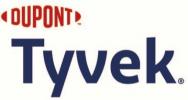 Enhanced thermal efficiency and high-performance protection for a priceless archive
Enhanced thermal efficiency and high-performance protection for a priceless archive
The facade of the new Repository wing of the re-developed Liverpool Central Library. DuPont™ Tyvek® advanced breather membrane is installed behind the external façade. Photo DuPont™ Tyvek®, all rights reserved.
The renewed Liverpool Central Library is a landmark £50 million redevelopment of a Grade II* listed building in a UNESCO World Heritage location. This exemplary scheme has employed advanced methods and materials to both restore important historic features and add bold new additions. Designed by Austin Smith Lord architects, the PFI funded project has been developed by Inspire Partnership, a joint venture between Amber Infrastructure and Shepherd Construction. Aiming from the outset to achieve optimum levels of efficiency and sustainability, the redevelopment has now attained BREEAM ‘Very Good’ status and won praise for its sympathetic design and construction management.
One of the impressive new build elements that replaces outdated structures from the1950s and 1970s is the Repository, now the home of the Liverpool Record Office, which has been built according to the latest British Standards for Repository and Archive storage (BS5454). The priceless collections housed within require constant levels of temperature, ventilation and humidity to be maintained, therefore the entire construction has been built to very specific tolerances.
DuPont™ Tyvek® Supro advanced breather membrane was specified for installation behind the north facing external wall of the Library’s Repository, to help protect the structure and enhance interior climate conditions. The cladding that finishes this wall consists of TECU® gold panelling, with a section of granite onto which has been emblazoned the names of Liverpool’s world-famous wordsmiths (from poets and playwrights to renowned lyricists Lennon & McCartney.)
Serving as an airtight but vapour open underlay behind the façade, DuPont™ Tyvek® Supro is an integral part of a holistic solution for the building envelope. The thermal performance, airtightness and energy-efficiency of a structure is dependent on the proper functioning of the entire system, from external walls to insulation to internal finishes and climate control services, and DuPont™ Tyvek® plays a key role in the overall building fabric of the Repository.
At Liverpool Central Library, a crucial aspect of its sustainable design is low infiltration rates to reduce both unwanted thermal losses and gains. This is complemented by conservation heating and recovery, high-efficiency boilers (plus a biodiesel generator) and high-efficiency lighting, plus rainwater harvesting. DuPont™ Tyvek® Supro is set to be a reliable element of a cutting-edge project designed to preserve historical wisdom for the long term.
Dupont Tyvek Flame Retardant Breather Membrane Sets a New Standard of Safety
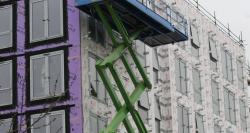 With the new DuPont™ Tyvek® FireCurb® flame retardant breather membranes, our mission is greater safety. Not all construction materials behave in the same way in a fire. A flame retardant breather membrane can play a key role in improving the safety performance of a building, by increasing time for building occupants to escape and potentially saving lives.
With the new DuPont™ Tyvek® FireCurb® flame retardant breather membranes, our mission is greater safety. Not all construction materials behave in the same way in a fire. A flame retardant breather membrane can play a key role in improving the safety performance of a building, by increasing time for building occupants to escape and potentially saving lives.
As industry leaders committed to safety, DuPont developed Tyvek® FireCurb® – flame retardant breather membranes using new, patented technology, and meeting EuroClass B (EN13501-1) fire reaction classifications as set by the European Commission. Adding flame retardancy to watertight but vapour-open Tyvek® breathable membranes, its development signals a shift in Tyvek® breather membranes classification from the standard fire reaction class E up to Euroclass B.
Definition of EuroClass B
Euroclass B is part of the fire reaction class system, EN13501-1, created to classify reaction to fire of materials, construction products and building elements and should replace UK fire class system BS476 Points 6 & 7.
In February 2002, EN13501-1 (Classification of construction products and building elements on reaction to fire) became a European Standard. Now Member States should implement this new standard and, although the rate of adoption is at varying speeds, there is a clear need for a move toward integration and harmonisation across the European market.
In recent technical literature, national fire class systems are often confused with the European classification. Special attention should always be paid to the norm behind the classification. If in doubt, you can obtain the information from the manufacturer. It should also be noted that Euroclass F remains for “not tested”, while Euroclass E represents the lowest classification of tested products.
Ignitability and Single Burning Item Tests
Euroclass B describes the fire performance of construction products based on two different tests. To obtain Euroclass B classification, flame retardant breather membranes must comply with test standards in two categories: Ignitability Test (EN ISO 11925 2), and Single Burning Item (SBI).
Ignitability Test indicates membrane flammability under exposure to a small flame
Single Burning Item (SBI) determines the potential contribution of a product to a fire, simulating a single burning item in a room corner near to that product
Materials awarded EuroClass B classification have been proven to exhibit very low flammability, limited or no contribution to fire, low heat release and low smoke development. In comparison, materials with EuroClass E classification are only required to meet standards set by the Ignitability Test, allowing occupants enough time to leave a burning building.
What Is Currently on the Market?
Many construction products contain ingredients which are designed to make the product less easily flammable, and such flame retardants may be either added to the bulk of the material or applied as a coating on the surface before or after installation. These treatments can be very effective in preventing fires, or slowing the spread of a fire once established, allowing more time for building occupants to escape.
In the past, the majority of flame retardant products contained halogens such as chlorine and bromine. When the material began to burn, these halogens would be released as gases, affecting the combustion reaction, and so extinguish or diminish the fire. However, these flame retardants came with a distinct disadvantage. The chlorine and bromine gases could contribute to toxic fumes. As a result, manufacturers have long been looking for alternatives.
This is where the DuPont™ Tyvek® FireCurb® flame retardant breather membranes come in – with their hard-to-burn layer created by using a halogen-free flame retardant coating, developed specifically for its limited environmental impact.
DuPont™ Tyvek® FireCurb®
Using new patented technology, DuPont has developed Tyvek® FireCurb®, which retains the strength, durability and water resistance of Tyvek® membranes and adds a flame retardancy that can be used in all building types, from high-rises to roof constructions, rainscreen cladding to timber frame constructions.
Tyvek® FireCurb® offers a solution which meets increased requirements in building and construction, as set out by the European Commission’s construction products directive.
Why not order a sample today?
The development of Tyvek® FireCurb® means that in all types of building applications, new flame retardant breather membranes from DuPont take fire protection to the next level.
DuPont continues to introduce new membranes and developments to meet different building requirements so it’s not surprising that using Tyvek® FireCurb® has specific benefits for different building applications.
Ventilated Façades for High-Rise Buildings
Limitation of fire propagation between floors by external envelope.
Open Rainscreen Cladding
Increases safety from unintentional small fire sources (e.g., cigarettes).
Timber Frame Building Construction
Limitation of fire propagation during construction phase.
Roofing Constructions
Increased safety during and after construction phase.

